Erica Vetsch's Blog, page 79
September 19, 2020
Sunday Scripture & Prayer Requests
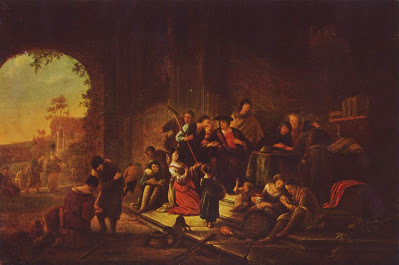 Parable of the Workers in the Vineyard, Patrick Paearz de Wet, mid-17th century, Museum of Art Budapest. [PS-US]Jesus told his disciples this parable:“The kingdom of heaven is like a landownerwho went out at dawn to hire laborers for his vineyard. After agreeing with them for the usual daily wage,he sent them into his vineyard. Going out about nine o’clock,the landowner saw others standing idle in the marketplace,and he said to them, ‘You too go into my vineyard,and I will give you what is just.’So they went off. And he went out again around noon,and around three o’clock, and did likewise. Going out about five o’clock,the landowner found others standing around, and said to them,‘Why do you stand here idle all day?’They answered, ‘Because no one has hired us.’He said to them, ‘You too go into my vineyard.’When it was evening the owner of the vineyard said to his foreman,‘Summon the laborers and give them their pay,beginning with the last and ending with the first.’When those who had started about five o’clock came,each received the usual daily wage. So when the first came, they thought that they would receive more,but each of them also got the usual wage. And on receiving it they grumbled against the landowner, saying,‘These last ones worked only one hour,and you have made them equal to us,who bore the day’s burden and the heat.’He said to one of them in reply,‘My friend, I am not cheating you. Did you not agree with me for the usual daily wage? Take what is yours and go. What if I wish to give this last one the same as you? Or am I not free to do as I wish with my own money? Are you envious because I am generous?’Thus, the last will be first, and the first will be last.”
Parable of the Workers in the Vineyard, Patrick Paearz de Wet, mid-17th century, Museum of Art Budapest. [PS-US]Jesus told his disciples this parable:“The kingdom of heaven is like a landownerwho went out at dawn to hire laborers for his vineyard. After agreeing with them for the usual daily wage,he sent them into his vineyard. Going out about nine o’clock,the landowner saw others standing idle in the marketplace,and he said to them, ‘You too go into my vineyard,and I will give you what is just.’So they went off. And he went out again around noon,and around three o’clock, and did likewise. Going out about five o’clock,the landowner found others standing around, and said to them,‘Why do you stand here idle all day?’They answered, ‘Because no one has hired us.’He said to them, ‘You too go into my vineyard.’When it was evening the owner of the vineyard said to his foreman,‘Summon the laborers and give them their pay,beginning with the last and ending with the first.’When those who had started about five o’clock came,each received the usual daily wage. So when the first came, they thought that they would receive more,but each of them also got the usual wage. And on receiving it they grumbled against the landowner, saying,‘These last ones worked only one hour,and you have made them equal to us,who bore the day’s burden and the heat.’He said to one of them in reply,‘My friend, I am not cheating you. Did you not agree with me for the usual daily wage? Take what is yours and go. What if I wish to give this last one the same as you? Or am I not free to do as I wish with my own money? Are you envious because I am generous?’Thus, the last will be first, and the first will be last.”Matthew 20:1-16a
The Seekerville bloggers are praying for YOU and for our entire blog community. If you have any special intentions that need additional prayer coverage, leave a request for prayer in the comment section below.
Please join us in praying for the United States--and the world--during this Coronavirus outbreak. Also please pray for calm to be restored to our country and for peace to reign.
We are so grateful for all of you—for your friendship and your support!
May the Lord bless you and your families and keep you safe.
September 18, 2020
Weekend Edition

If you are not familiar with our giveaway rules, take a minute to read them here. It keeps us all happy! All winners should send their name, address, and phone number to claim prizes. Note our new email address and please send your emails to Seekerville2@gmail.com

Monday: Missy Tippens shared about her great experience with Plottr software for story planning.
Wednesday: Debby Giusti blogged about "Raising the Bar on Happily Ever After." Debby held a drawing for her October LIS, Amish Christmas Search. Congrats to winners Vince, Lucy Reynolds, Sandy Smith and Rachel Herod. Be sure to send your snail mail addresses to the WE so Debby can get your winning books in the mail.
Friday: Winnie Griggs blogged about "Using Imagery In Your Writing". Stay tuned for an announcement of who won their choice of any book in her backlist.

Monday: Jan Drexler will be discussing heroes (and heroines!) What makes a hero a hero? And who is the hero in your story? PLUS, a giveaway!
Wednesday: Cate Nolan will have you hissing with a cover release and a discussion about cover art and book promotion. Includes a giveaway IOU for her new LIS out this January! Friday: Pam Hillman

Christmas in OctoberFrom USA TODAY bestselling authorDEBBY GIUSTI
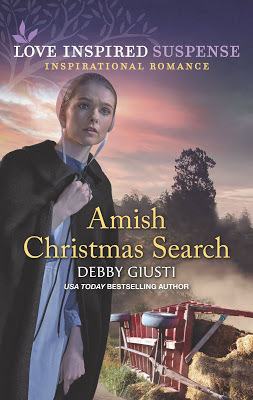
Amish Christmas SearchOct 2020An Amish girl’s disappearance is a mystery…and the clues lead straight into danger at Christmas.Convinced her friend didn’t run away as the policebelieve, Lizzie Kauffman searches for the truth—butsomeone will kill to keep it hidden. Now the Amishhousekeeper and her friend Caleb Zook are on therun for their lives. And if they want to find theirmissing friend, Lizzie and Caleb must figure outa way to survive the holiday.
Pre-order HERE!

How To Write A Killer First Page by Keionda Lewis at Writer's Edit
My 10 Favorite Pinterest Book Templates for Authors by LA Sartor at Book Brush
Creating a Publishing Timeline for Your Next Release by Becci Puglisi at The Self Publisher
Are You Willing to Declutter Your Fears to Achieve Your Dreams? by Lisa Jordan at Learn How To Write A Novel
Getting Feedback on Your Writing Without Losing Control by Michael Gallant at BookBaby Blog
19 Bible Verses About Journaling at OpenBible
Your Premise Determines Your Characters by CS Lakin at Live Write Thrive
The Crucial Link Between Your Story's Inciting Incident and Climactic Moment by KM Weiland at Helping Writers Become Authors
How To Start Using Facebook Live Videos As An Author by Beth K. Vogt at Learn How To Write A Novel
Create A Powerful Story Cast: A Master List of Character Building Resources by Angela Ackerman at Fiction University
Writing In Multiple Genres, Okay? Not Okay? by Tamela Hancock Murray at Steve Laube
7 Steps to Plan & Organize Your First Draft by Aden Curren at Writer's Edit
September 17, 2020
Using Imagery In Your Writing
[image error]
Hello everyone, Winnie Griggs here.
Today I want to talk a little bit about the use of Imagery in your writing. First, a quick unofficial definition: Imagery is the use of descriptive or figurative language to evoke a mental picture of the scene, action or emotion being depicted.
It’s much more than simple description, it is a tool that helps the writer paint vivid pictures that fire the reader’s imagination, that gives them new ways to look at whatever it is that’s being described. Painting those fresh word pictures is key to creating fiction that resonates. In other words imagery helps the writer say things in a way that touches the reader more effectively than a literal description would. Because, by the act of their need to read between the lines and make the necessary translations and connections, however slight, readers become more involved and more engaged in the story.
Let’s talk about some of those methods.
Metaphors and Similes
These are probably the most common types of figurative language we use. While similar, metaphors and similes are not the same thing. A simile takes two distinctly different items and compares them using words such as ‘like’ and ‘as’. A metaphor also compares two essentially different things but in a more subtle way. It doesn’t announce the comparison by using comparative language but rather uses the items being compared interchangeably, implying that they actually arethe same.
Let’s use an example to illustrate:
The dandelion fluff scattered in the wind like a troupe of graceful dancers (simile)
The gust of wind awakened the drowsing bits of dandelion fluff, scattering them from their hammocks to gracefully dance across the meadow. (Metaphor)
In these examples, dandelion fluff is being compared to dancers. The difference is, in the first example you are being explicitly told that this is a comparison and in the second you are implying it by giving the dandelion fluff the characteristics of a dancer. There is a place for both constructs in your writing.

Analogy
An analogy is very similar to a metaphor or simile, in that it makes comparisons. In fact, analogies normally employ similes and metaphors. The main difference is that an analogy is used to do more than describe, it is used to explain or convince the reader/listener of an idea or concept.
Robert Lee Brewer in Writer’s Digest explains the differences using these examples:
Metaphor: Time is a thief.
Simile: Time is like a thief.
Analogy: Time is like a thief in that thieves steal physical objects and time steals moments of our lives.
Another example of an analogy, this one from Mark Twain:
“The difference between the right word and the almost right word is the difference between lightening and a lightening bug.
Zeugma
A zeugma is another comparative technique, and is one of my favorites. It’s much rarer than the others we’ve discussed but when done well it can be quite effective. A zeugma is a word that is used to modify or govern two individual words or phrases, but each in a different way.
It sounds complicated but here is a fairly simple example:
Working beside my grandmother in her garden that summer wore holes in the knees of my jeans, and in my heart.
In the matter of the jeans we are, of course, referring to actual holes. In the case of the heart, however, we are using the word more figuratively.
Symbols
Symbolism is another great way to add the power of imagery to your work. Symbolism is the use of some object or action to represent an idea, emotion or any other abstract quality. It’s a type of shorthand. If you show a motorist an octagonal red sign, even if there are no words on it, he understands he’s supposed to stop. If a parking space has a stylized image of a person seated in a wheelchair, drivers know that spot is reserved for handicap access vehicles. These are symbols.
In literature, you’ll find two categories of symbols - author created symbols and universally understood symbols.
Universally understood symbols are those that convey meaning either by their very nature or by their context. One of my favorite examples of this is from the movie Notting Hill. There’s a scene in the movie where the Hugh Grant character is trying to get over the blow up of his relationship with the Julia Roberts character, and we see him walking through the market in a scene that takes up only about 2-3 minutes of actual screen time. But during this walk, without the use of any dialogue, we see background characters and weather elements flow seamlessly through changes in such a way that by the end of his stroll we know an entire year has passed in his world. And this was done entirely with a shorthand that we as viewers instinctively understood.
There are lots of these kinds of symbols out there - road signs, storms, falling leaves, howling wind, flowers in bloom, shooting stars, new dawns and sunsets, and oh so many more - they are all around us, all have meaning to our readers and all can be used in a number of ways to signify different things. For instance, depending on your story’s theme and context, a reference to falling leaves can conjure images of the inevitability of death, or it can signal that holiday time is drawing near, or for the less astute reader, it can mean nothing more than that it is autumn. And it can do this without any overt reference to any of those things.
Then there are the symbols that are author created. Something you give significance and meaning to in a way that it then becomes shorthand for that meaning throughout your story.
For instance, in page one of my book A Matter of Trust you’ll find this passage:
Her sweet, curious, intelligent little boy - he was so precious to her. Now that her own mother was gone, he was all she had that truly mattered.
Lucy’s smile faltered at that reminder of her loss, and she pressed a hand lightly against her bodice, comforted by the feel of her mother’s locket, cool against her skin.
From that point on in the story, whenever Lucy touches that locket, which she does on several occasions, the reader should have a sense of what she’s feeling without me having to elaborate.
You should be subtle about your use of symbols, even the more obvious ones. And never, ever explain a symbol to your readers. If you’ve done your job properly, then the perceptive reader will ‘get it’ either on a conscious or subconscious level. If less perceptive readers only see it for its face value, then so be it.
[image error]
Some DOs and DON’Ts on imagery
Strive for originality
When crafting your images - avoid clichés like the plague! There are exceptions of course, but for the most part you want to give your reader fresh imagery to fire their imagination. Find new ways to say ‘cold as ice’ or ‘fresh as a daisy’.
Here are some snippets pulled from my book The Christmas Journey:
As frustrated as a frisky dog on a short leash.
Relief washed through her in giddy waves.
She was still madder than a dunked cat
Use the mood and setting of your book to create the palette you draw your images from
Is your book a gothic set in the Victorian period? Much of your imagery should have a dark, heavy, ominous feel - storms, nighttime, forests, rock, thorns, scavenger animals
On the other hand, if your story is a light-hearted romp set in small town America, your imagery might be drawn from things like sunshine, spring, flowers, songbirds, domesticated animals
Here are some snippets pulled from my book, The Christmas Journey, which is a western
Otis glanced her way and the ugly smile he flashed sent alarm skittering up her spine like a frightened centipede.
Otis and Clete lounged outside the saloon, all but licking their chops, nudging each other like a pair of weasels who’d spied a way into the chicken coop.
Mr. Lassiter’s well-being was more important than getting vengeance on that bucket of pond scum.
Keep your imagery focused.
Don’t make it a multiple choice issue for your reader.
For example: He was as forceful as a locomotive barreling down the tracks, or as a tornado swirling across the plains. Not good - pick one!
Also, make sure you use an image we can grasp.
The sentence - He was as effective as Daedalus in teaching caution to his son won’t evoke an image for the reader if they don’t know who Daedalus was.
Surprise Your Reader With The Unexpected
When you are trying to describe a woman’s lips, a skilled writer will naturally reach for something other than red as rubies or cherries. But suppose you take it in an entirely different direction - say red and puffy as an inflamed blister or that they matched her bloodshot eyes? It might make your reader squirm a bit, but it’ll definitely paint a memorable picture, and depending on what you’re going for, it could work.
Some Final Thoughts
You obviously don’t want or need to overload your story with imagery and symbolism. As with any technique, overuse can result in reader dissatisfaction or a dilution of impact. So sometimes you simply want to describe a scene or emotion literally. The key is to know when and how to use these tools to create the most enjoyable experience for your reader.
Figurative language is a powerful tool for your literary arsenal and one you shouldn’t be afraid to play with. When properly wielded it can transform and elevate your writing.
Do you have some favorite examples of imagery from books or movies that you’d like to share? Is so, please post them for us.
Leave a comment to get your name in the hat for your choice of any book in my backlist.
September 15, 2020
Raising the Bar on Happily Ever After
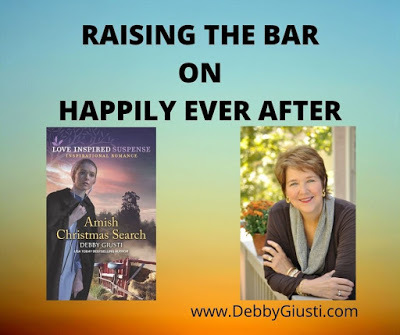 By Debby Giusti
By Debby Giusti Romance readers expect—no, they demand—a Happily Ever After in the stories they read. When they pick up a novel, they’re eager to follow the hero and heroine through twists and turns, highs and lows, squabbles and make-ups to get to the end. Although readers love the journey, it’s the destination—the Happily Ever After—that brings the contented sigh as they close the book. It’s also what makes readers buy the author’s next book and the one after that so they can experience that satisfying HEA once again.
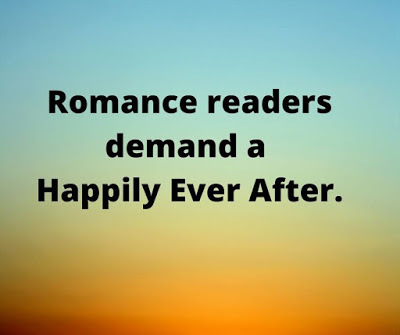
Let’s look at other genres. Mystery stories end when the crime is solved and the guilty are apprehended and brought to justice. Some whodunits include a romantic thread, but the resolution that most satisfies the mystery reader is solving the crime along with the story’s sleuth.
In suspense, thriller and horror genres, readers experience a surge of adrenalin as the protagonist faces overwhelming odds and battles the antagonist. The reader sees himself as the hero. The threats are personal and the resolution emotionally satisfying when the villain is thwarted and the protagonist saves the day.
Men’s Adventure stories are similar, although they usually feature a cataclysmic event that will occur if the hero fails to outsmart the antagonist. Fantasy includes a good vs. evil element set in an alternative world, and dystopian fiction takes place in an after-the-apocalypse style setting when civilization as we know it is overtaken by a stronger, controlling entity. Romance may be included in the stories, but the main emphasis pits the protagonist against his or her opposing nemesis.
In Women’s fiction—and its chick lit offshoot—the reader journeys with the protagonist as she achieves a goal or learns something new about herself. A love interest may be included, although the romance is not the main focus of the story.
Literary fiction has been described as a segment of time in the protagonist’s life that does not necessary involve a goal or cause the lead character to change or grow. The resolution is often open-ended, leaving the reader to form his or her own conclusion to the story.

Romance readers never have to speculate about the ending of the stories they love to read. They know the heroine—with whom they identify—will find her hero, and the two of them will declare their love in the final scenes. Usually the hero proposes marriage, and sometimes the wedding is included as an epilogue. Wedding or not, the reader knows for certain that the hero and heroine will live happily ever after.
We all long for love, which is why romance stories resonate with readers. Finding love and being loved is the eternal quest. As Christians, we understand that the need for love is innate in all of us. God is love and the reason for our existence is to love him and serve him in this life and to be united with him forever in Heaven. The very essence of our being is centered on our love for God and His unconditional love for us. That love spills over into our love of neighbor and especially for that certain someone with whom we want to spend the rest of our life—our soulmate, our significant other, our spouse.
Secular romance most often focuses on physical love that the Greeks called eros. Christian romance elevates love to a higher level, known by the Greeks as agape or the giving of self for the good of the other. Christ died on the cross so we could have eternal life with him. Scripture recounts in John 15:13, “No greater love hath man than to lay down his life for another.” That’s sacrificial love and Christ asks us to follow his example. Including sacrificial love in our stories makes them even more satisfying to the reader.

We see this dying to self frequently in suspense stories when the hero is willing to sacrifice his own life to save the woman he loves, but it can also be found in stories that do not have life or death issues. “The Gift of the Magi,” by O. Henry, comes to mind where both the husband and wife sold what they prized most and used the money earned to buy a Christmas gift for the other. Their lives weren’t threatened, but their actions were sacrificial.
At the conclusion of a satisfying romance, the reader is uplifted. To capture her heart, add sacrificial elements, be they ever so subtle, to raise the bar on your Happily Ever After.
Tell us about the stories with Happily Ever Afters that resonated with you! What made them special? Let me know if you want to be entered in a drawing for a copy of my October Love Inspired Suspense, Amish Christmas Search!
Happy writing! Happy reading!
Wishing you abundant blessings,
Debby Giusti

Amish Christmas Search
Oct 2020
An Amish girl’s disappearance is a mystery…
and the clues lead straight into danger at Christmas.
Convinced her friend didn’t run away as the police
believe, Lizzie Kauffman searches for the truth—but
someone will kill to keep it hidden. Now the Amish
housekeeper and her friend Caleb Zook are on the
run for their lives. And if they want to find their
missing friend, Lizzie and Caleb must figure out
a way to survive the holiday.
Pre-order HERE!
September 13, 2020
Story Planning Software: Plottr
Missy Tippens
Do you like to visually plan your stories--mind maps, poster boards, sticky notes, charts, Scrivener cork board, notecards, and/or timelines? If so, I’ve discovered a great new app I wanted to share with you today!
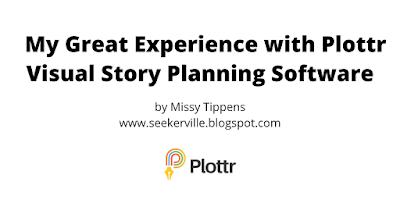
Plottr. It helps you create visual timelines that can assist you in generating your outline/synopsis.
I bought the program back in May and feel as if I’ve barely put a dent in all I’ll be able to do with it. Plus, as they get feedback from authors, they’re releasing new features constantly. I’ll just share a few of the features I’ve been using and really like.
One of my favorite things is being able to use a template. I have a hard time seeing the big picture in a story, so this really helps me keep on target. They offer many templates, some of which you’ve already heard of or used. Just a few examples are The Hero’s Journey (Joseph Campbell), Romancing the Beat (Gwen Hayes), 12 Chapter Mystery, The W Plot, and Story Circle (Dan Harmon). I played around with two or three and finally settled on using Romancing the Beat. I love it!
What’s great is that you can fill in each beat as is, or you can move things around to suit your story. Everything can be dragged and dropped. You can have multiple plot lines. You can have multiple views (vertical or horizontal). You can use multiple colors. You can pull up your story in outline mode or timeline mode.
Here’s an example so you can envision how the timeline works.

You can create plot cards and also store info about your characters. You can even keep track of a series! You can create a story bible. You can store photos/images. Here's an example of storing information about Places:

You can tag things, so that if you want to do a search—for example one particular character—you can pull up everything with that tag and follow that character’s scenes. You can also tag particular plot lines (romance, character arc, faith journey, etc) so that you can keep up.
Here’s an example of tagging and filtering:

Once you have your timeline filled in, you can auto-generate an outline.
I just discovered you can even add dialogue snippets if they hit you while you’re working. :) I’ll be using that soon.

I also thought it might help to see the timeline in vertical view in case your brain works better seeing it that way:

I could go on and on. Here's a link to Plottr so you can check it out. (No affiliate links. I just wanted to include a link to make it easier for you.) You can download a free trial to see what you think of it. They also have demos you can check out.
Plottr was created by Cameron Sutter. Cameron was a software engineer by trade who was writing novels but having trouble figuring out how to plan them and be able to keep track of notes, and manage story elements that changed all the time. A friend in his writing group suggested a visual tool for planning stories. So he got to work on one using his software background!
I’ve used the Scrivener corkboard for planning my stories (it’s the only feature I use in Scrivener). But I find Plottr works much better for me. I can do a lot more with my plot (scene/beat) cards. I’m pleased that I can get a visual grip on my whole story. And for those who do use Scrivener, you can export to Scrivener. You can also export to Word. Another feature in the works now at Plottr…you’ll eventually be able to sync with Scrivener.
I’ll be here today to answer questions. As I said, I’ve only scratched the surface. One nice thing is that there’s a Facebook page for users to ask questions (or just lurk like I do). :)
If you like to plan your stories visually, I hope you'll check it out. Let me know what you think!

, a pastor’s wife and mom of three from near Atlanta, Georgia, made her first sale to Harlequin Love Inspired in 2007. Her books have since been nominated for the Booksellers Best, Holt Medallion, American Christian Fiction Writers Carol Award, Gayle Wilson Award of Excellence, Maggie Award, Beacon Contest, RT Reviewer’s Choice Award, and the Romance Writers of America RITA® Award. Visit Missy at www.missytippens.com, https://twitter.com/MissyTippens and http://www.facebook.com/missy.tippens.readers.
September 12, 2020
Sunday Scripture & Prayer Requests
 This Parable of the Unmerciful Servant, by Jan van Hemessen, c. 1556, shows the moment when the king scolds the servant. University of Michigan Museum of Art. [PD-US]
This Parable of the Unmerciful Servant, by Jan van Hemessen, c. 1556, shows the moment when the king scolds the servant. University of Michigan Museum of Art. [PD-US]Peter approached Jesus and asked him,“Lord, if my brother sins against me, how often must I forgive?As many as seven times?” Jesus answered, “I say to you, not seven times but seventy-seven times. That is why the kingdom of heaven may be likened to a king who decided to settle accounts with his servants. When he began the accounting, a debtor was brought before him who owed him a huge amount. Since he had no way of paying it back, his master ordered him to be sold,along with his wife, his children, and all his property, in payment of the debt. At that, the servant fell down, did him homage, and said, ‘Be patient with me, and I will pay you back in full.’Moved with compassion the master of that servant let him go and forgave him the loan. When that servant had left, he found one of his fellow servants who owed him a much smaller amount. He seized him and started to choke him, demanding, ‘Pay back what you owe.’Falling to his knees, his fellow servant begged him, ‘Be patient with me, and I will pay you back.’But he refused. Instead, he had the fellow servant put in prisonuntil he paid back the debt. Now when his fellow servants saw what had happened,they were deeply disturbed, and went to their master and reported the whole affair. His master summoned him and said to him, ‘You wicked servant! I forgave you your entire debt because you begged me to. Should you not have had pity on your fellow servant, as I had pity on you?’Matthew 18:21-35
The Seekerville bloggers are praying for YOU and for our entire blog community. If you have any special intentions that need additional prayer coverage, leave a request for prayer in the comment section below.
Please join us in praying for the United States--and the world--during this Coronavirus outbreak. Also please pray for calm to be restored to our country and for peace to reign.
We are so grateful for all of you—for your friendship and your support!
May the Lord bless you and your families and keep you safe.
September 11, 2020
Weekend Edition

If you are not familiar with our giveaway rules, take a minute to read them here. It keeps us all happy! All winners should send their name, address, and phone number to claim prizes. Note our new email address and please send your emails to Seekerville2@gmail.com

Monday: Happy Labor Day - Seekerville Closed
Wednesday: Ruthy Logan Herne posted about Risk vs Reward in our writing businesses. Winners of copies of Season of Hope are Edwina and Tanya Agler!
Friday: 9/11 Tribute - Seekerville Closed

Monday: Missy Tippens will be sharing about a great new writing program she is using! Plottr is a way to "organize your writing quickly and visually." Come hear about Missy's experience while learning to use Plottr.
Wednesday: Debby Giusti talks about the importance of a Happily Ever After! Join in the chat to have your name entered in a drawing for Debby's October LIS, Amish Christmas Secrets. Friday: Winnie Griggs will be sharing a Best of the Archives!

Christmas in OctoberFrom USA TODAY bestselling authorDEBBY GIUSTI

Amish Christmas SearchOct 2020An Amish girl’s disappearance is a mystery…and the clues lead straight into danger at Christmas.Convinced her friend didn’t run away as the policebelieve, Lizzie Kauffman searches for the truth—butsomeone will kill to keep it hidden. Now the Amishhousekeeper and her friend Caleb Zook are on therun for their lives. And if they want to find theirmissing friend, Lizzie and Caleb must figure outa way to survive the holiday.
Pre-order HERE!
Love inspired has reissued the first two books in the Texas Grooms series by award winning author Winnie Griggs in a 2-in-1 volume.
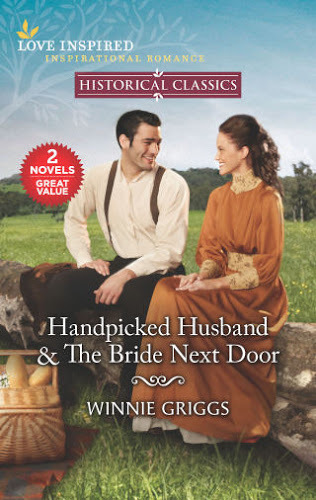
Handpicked Husband
Regina Nash must marry one of the men her grandfather has chosen for her or lose custody of her nephew. But Reggie knows marriage is not for her, so she must persuade them—and Adam Barr, her grandfather’s envoy—that she’d make a thoroughly unsuitable wife.
Adam is drawn to the free-spirited photographer, but his job was to make sure Regina chose from the men he escorted to Texas—not marry her himself!
The Bride Next Door
Daisy Johnson is ready to settle in Turnabout, Texas, open a restaurant and perhaps find a husband. Of course, she’d envisioned a man who actually likes her, not someone who offers a marriage of convenience to avoid scandal.
Newspaper reporter Everett Fulton may find himself suddenly married, but his dreams of leaving haven’t changed. What Daisy wants—home, family, tenderness—he can’t provide…
Available for purchase HERE

How to Overcome Discouragement as an Author by Emma Eggleston at Live Write Thrive
Is Writing Work? by Jael McHenry at Writer Unboxed
Can Silence Make You A Better Writer? by Bob Hostetler at Steve Laube
What Your First 50 Pages Reveals by Susan DeFrietas at Jane Friedman
Blog Formatting Tips by Edie Melson at The Write Conversation
Black Moments: Understanding Our Options by Jami Gold
How To Write The Perfect Chapter by Lewis at The Novel Smithy
September 10, 2020
September 11th

Remember our heroes. Remember those we lost. Remember those still with us. Let hope continue to endure. Let the peace of God bring comfort to all. God bless you.
September 8, 2020
Risk vs. Reward: A Back to Basics Post

We hear this phrase all the time.
Risk vs. reward.
It means is the risk you're taking worth the reward you hope to glean? How do you measure that?
We hear "measured risk".
What you're doing has risk: the question is how much?
We hear "Return on Investment".
Will you get more from your investment than the risk you're taking?
These are questions small business people ask themselves, and if you're an author, you are a small business owner. You own you! And your product is for sale. Whether or not you're incorporated or running solo, you are the business person.
Is this the boring side of writing?
Heck, no! It's a major component of any business, my friends, it's what separates the people who make a living writing and the dabblers. Now there is nothing wrong with dabblers.
Emily Dickinson was a dabbler... little known during her life in Massachusetts. If you look at her work now, you know that she was amazing. So if you're happy in your cozy space and spending hours a day on craft isn't your thing, that's okay!!!! You're okay!
But if you view/see/consider your writing as a career, as a valid choice for gainful employment, you need to look at risk vs. reward.
Some choices you make are low risk. Writing. Working. Editing. Writing some more.
We hear so much between friends, advisories, industry professionals.
There are online classes and blogs (like this one!), professional gatherings, conferences (when there's no pandemic, right?) and loops full of professionals.
That last one can trip you up if you say too much. Remember, it's not a gathering of friends in your living room. It's a virtual group of sometimes hundreds of people, some of whom lurk, (including most editors and agents on loops) and watch and listen and learn about you.
It's good to bite your tongue. Don't over-react. Bide your time. Keep working. Remember the adage "It's better to let people think you're stupid than to open your mouth and prove them right."
There are grains of truth in that!
Social media can be your undoing... all of your time, talent and treasure can be swept under a rug if social media goes crazy on you. If you become a target of any group. Does your opinion matter?
Of course it does!
Mostly to you! :)
But when you put it out there, you may get 20 or 50 friends who jump all over you in sympathy but what about that editor or agent or publishing house? What do THEY see in your posts?
Do they see the fresh, eager, pleasant author that draws people to him/her?
Caveat: If your name is Stephen or Nora or Clive or J.K., this does not apply to you. Say what you want, because your sales are in the millions and that's not likely to change. Nor, are you generally on Facebook, so you get a pass... because your risk will not significantly affect your reward because you've already made millions of dollars.
And if you're voting blue or red or nondescript, do you want to alienate 50% of the shrinking pool of readers by being overtly political?
It's your choice, of course.
But choices have consequences. They always do. We teach our kids that every day, but sometimes we fail to see that in our adult lives.
When I write a story I see the basic mathematical equation of Newton's 3rd Law: "Every action has an equal and opposite reaction."

When you put that into emotion and words, it becomes the back-and-forth flow of a great story. In life, it becomes the reality we immerse ourselves in.
Good or bad, negative or positive, whiny or stoic, introvert or extrovert, we are humans and we have control. How we use that control in our professional lives can make a great difference in how others perceive us and how our path is charted.
Your risks can have a definitive effect on your reward.
Your duty is to ask yourself "Is it worth it?"
And then take responsibility for whichever path you choose because you're a thinking adult. You know that actions have consequences...
Are you ready to risk your potential reward to those consequences?
That's the crux of the question.
I'm celebrating the re-release of this beautiful story "Season of Hope", book 2 of my North Country series originally my debut Love Inspired novels... and I hope you win one! Leave a comment below and I'll tuck your name into the drawing for one of two copies of this wonderful book that shares the stories of two overcomers... and how they grabbed hold of God's second chance together!
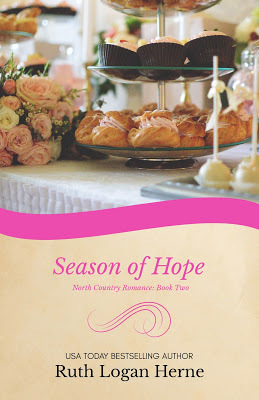

Multi-published, bestselling inspirational author Ruth Logan Herne is immersed in pumpkin life on her farm in Western New York and gets up in the wee small hours to write stories that folks love to remember... A mother and grandmother, she can often be seen with coffee or Diet Mtn. Dew, cookies, dogs and cute kids. She loves writing about small towns and faith and the kind of people we meet every day, and Ruthy actually likes people (she is not an Emily Dickinson type!) and would love to hear from you! Email her at loganherne@gmail.com, visit her website ruthloganherne.com or friend her on Facebook where she shares pics of the farm and family she loves.
September 7, 2020
Release Day Party.... Second Time Around!
I love release day parties!
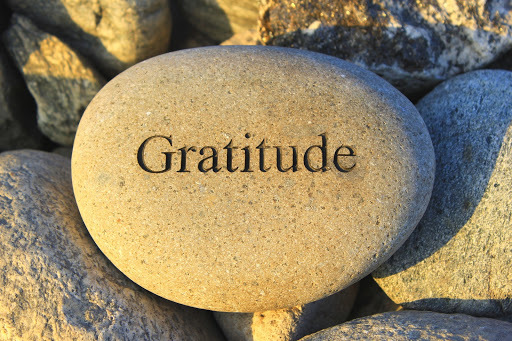
I can honestly tell you that sixty books in, I still love, love, love release day parties.
This one is a second release for this beautiful story of second chances, new beginnings and the chance to start over. It was my third sale to Love Inspired, and this North Country series began my career... so how fitting to be able to re-release them on Amazon now!
I was just chatting with Pam Hillman about re-releases... I love working with companies that re-release books. I've often wondered why more don't do that???? It's quick cash for them and if there's been a space of time, authors often have a whole new stable of readers, so wouldn't it make sense to re-release? Low investment, strong return.... Sweet for all involved.
And Love Inspired is great about this. They re-release stories on a regular basis and they've done this with a lot of mine, but when I started writing for LI, the books were longer... that means those longer books don't fit the current packaging, so they gave me back the rights to my first three books and I'm re-releasing them this summer.
I know I party-danced when "Waiting Out the Storm" released in June...
And now "Season of Hope" is releasing!!!! Did I mention that???? :) With new formatting from the Killion Group (I've been happily using them for years) and a beautiful cover by Beth Jamison of Jamison Editing who is crazy reasonable with her editing and her cover work.

And next month will be the re-release of an award-nominated debut novel "Winter's End", but today we're celebrating "Season of Hope", a story that has touched a lot of hearts. It tackles some rugged subjects, a family betrayed by the husband/father that was supposed to love them and protect them... The strength of a former Delta Commander who's risen above his slip into alcoholism years before and the growing strength of Rita Slocum who we met in Book One, the widow who fell into the hole of substance abuse when her world fell apart.
But Rita has taken the reins once more with the help of her sister-in-law, AA, and the love of her children. Two of them, anyway. The third is a handful in so many ways, but as Rita strengthens, so do her children... and her chance at a new beginning.
I love stories of mended hearts. I love stories that wrap us around the hero and heroine's hearts and let us see them as real people... and that's because I surround myself with real people. I love people. They amaze me, impress me, confound me and bless me in so many ways and I often think of how much introverts miss in the story and glory of life by not embracing people.
Because therein lies the story. With people.
I have TWO COPIES of "Season of Hope" to give away today. E-copies... the paperback is coming but won't be available for a week or two. I hope you win a copy!!!
But if not, I can absolutely promise you that Brooks' and Rita's story is well worth every penny of that $1.99 price tag... or free on Kindle Unlimited.
And you honor me with every book you read and/or buy! So thank you!

Multi-published, USA Today Bestselling author Ruth Logan Herne lives a prosaic life on a pumpkin farm in Western New York and she absolutely, positively loves it, but she also loves to write unforgettable stories that lift women's souls because a woman who's soul sings to the Lord is a woman that can handle whatever this life hands her. With over 2,000,000 books sold, you know that Ruthy loves what she does!
You can email Ruthy at loganherne@gmail.com, visit her website ruthloganherne.com or friend her on Facebook (where she loves to talk... and talk... and, well, you get it.... ) :)



